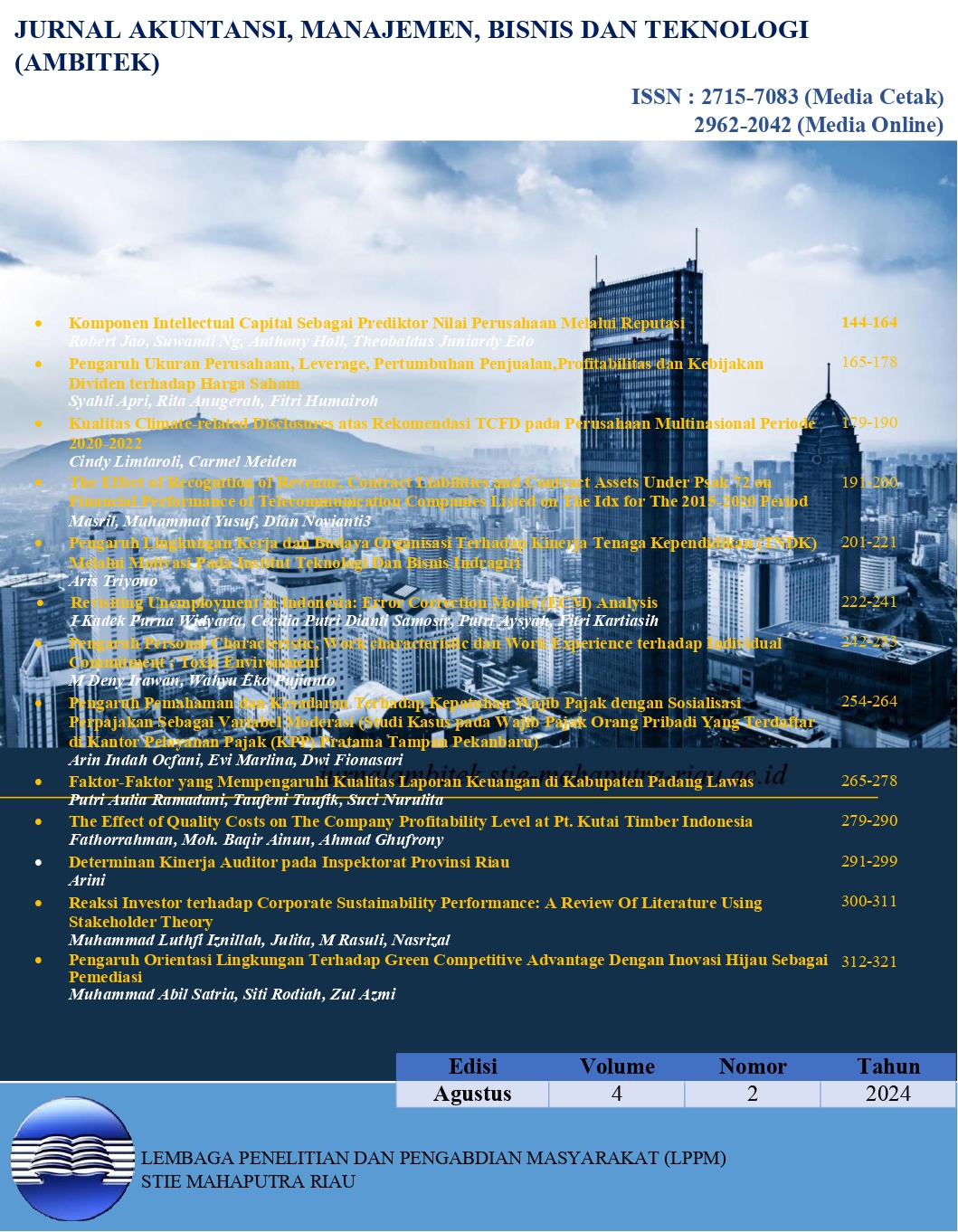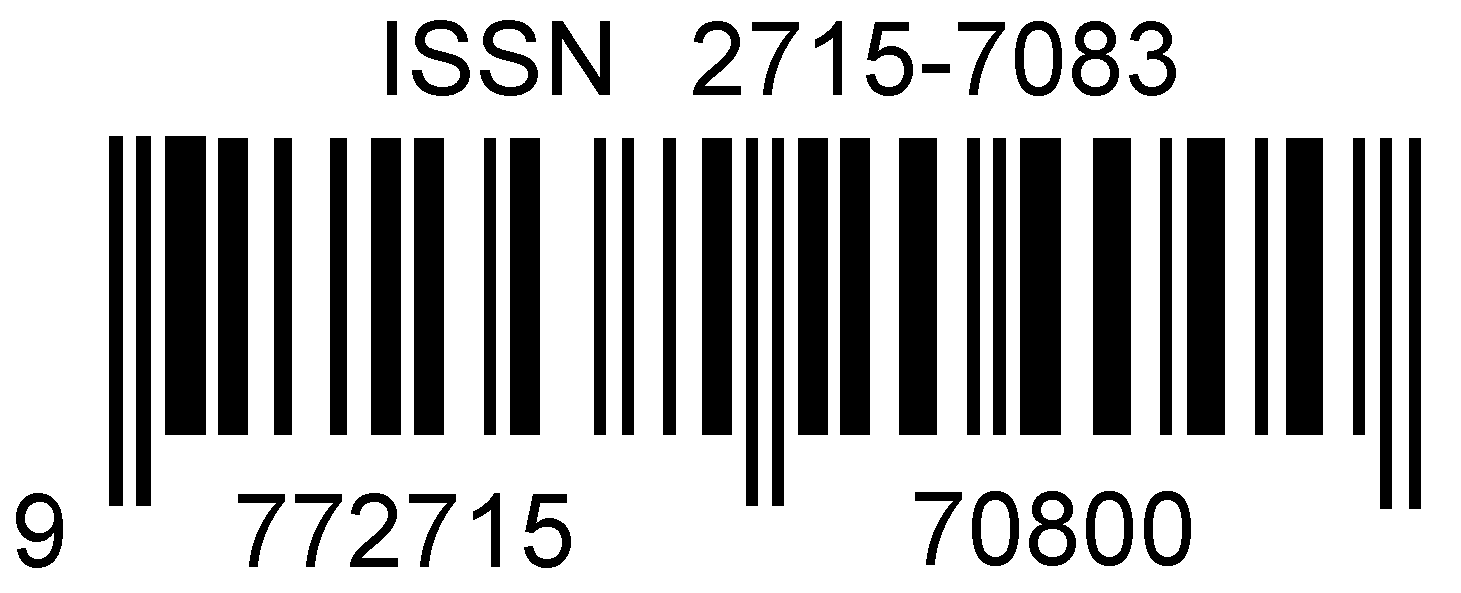The Effect of Quality Costs on The Company Profitability Level at Pt. Kutai Timber Indonesia
DOI:
https://doi.org/10.56870/md0ff673Kata Kunci:
Prevention costs, assessment costs, internal failure costs, external failure costsAbstrak
The purpose of this study is to analyse the impact of different failure costs on the company's profitability. The variables studied include prevention cost (X1), assessment cost (X2), internal failure cost (X3) and external failure cost (X4) to the level of profitability (Y). The results showed that prevention costs (X1) had a significant effect on profitability with a regression coefficient of 3.200 and Fcount 16.217 greater than Ftable 3.111, and a significance of 0.002 <0.05. This indicates that good prevention can improve product quality and reduce costs. However, appraisal cost (X2) and internal failure cost (X3) have no significant effect on profitability. The regression coefficient for X2 is -2.003 and X3 is -2.153, with Fcount 16.217, Ftable 3.111 and significance 0.002 and 0.033 respectively. This indicates that these two costs do not significantly affect the company's profitability. In contrast, external failure costs (X4) have a significant influence with a regression coefficient of 3.716, Fcount 16.217, Ftable 3.111 and a significance of 0.000 <0.05. The cost of external failures such as product damage requires substandard product replacement so that it has a negative impact on profitability. Simultaneous testing shows that external failure costs have the greatest impact on profitability. These results highlight the importance of managing external failure costs to improve profitability and operational efficiency of the company.
Unduhan
File Tambahan
Diterbitkan
Terbitan
Bagian
Lisensi
Hak Cipta (c) 2024 fathor, Moh. Baqir Ainun , Ahmad Ghufrony

Artikel ini berlisensiCreative Commons Attribution-ShareAlike 4.0 International License.


















